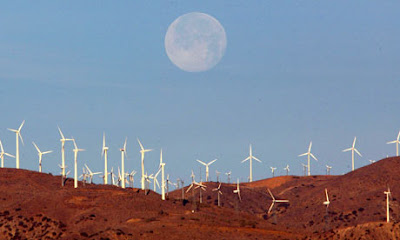Our Automobile Future

2008-Jan-18
by Michael O'Brien
Our Automobile Future
I write this letter as we come off the heels of the Bali Conference where world leaders met to discuss the issue of climate change. This important meeting did result in an agreement that has been described by Thomas Friedman as “incremental” change. Rajendra Pachauri, head of the prestigious United Nations Intergovernmental Panel on Climate Change reported that “If there's no action before 2012, that's too late. What we do in the next two to three years will determine our future. This is the defining moment." Friedman discusses in his opinion in a New York Times op-ed article that the change we need has to be transformational. A little tweaking here and a little tweaking there is not going to protect ourselves from the predictable calamity that scientists say will occur. A case in point is automobile usage worldwide.
According to Elizabeth Kobert who wrote a article titled “Running on Fumes” for the New Yorker, she says that there are about 9 personal cars per 1,000 eligible people in China. In India, there are about 11 cars per 1,000 eligible drivers. The comparison becomes interesting when you factor in cars in the United States. Kobert says that we have 1,114 automobiles per 1,000 eligible drivers. These figures help us understand why the United States is the top consumer of fossil fuels and emitter of carbon. The really frightening aspect of all of this is knowing that both China and India's economies are on a substantial growth track that will forever change the above automobile ratios. They are hungry for all of the amenities that are synonymous with a comfortable modern life and driving is one of them.
The urbanization of China has been dramatic over the past decade. Peasants have left the countryside for jobs in urban areas and the promise of a better life. As a result, urban areas have sprung up almost overnight to accommodate the boom in manufacturing. With a population if over 1 billion people, China has over 200 cities with at least 1 million people. As they increase their income, they will have expendable income that will allow them to purchase automobiles. The future looks bright for car sales in China and India. Kobert argues that if China and India were to reach car ownership at just half the numbers of American drivers, those two countries would burn through 100 million barrels of oil a day. If they were to match the number of United States drivers, they would need 200 million barrels of oil a day. To the average person these numbers appear quite meaningless until you understand that the current total world consumption a day is about 86 million barrels of oil. This level of oil production has plateaued since December of 2005 and many are worried that we have begun the inevitable decline in our ability to pump oil at these rates.
This would all be just an interesting academic discussion if it weren't for the fact that 35 billion dollars was just sucked out of our economy due to the increase in fuel prices as we were heading into the Christmas holiday. Money spent on fuel is not money spent on the holiday. A recent poll by by Gfk Roper Public Affairs and Media reports that 27 million Americans will need to borrow money to pay their fuel bills this winter, 20 million of them will use credit cards to pay for heat to stay warm. This comes at a time when utility companies are expanding the payment options for households and for many this includes credit cards.
As we look forward, a prudent person would understand that we are facing several enormous dilemmas. First of all, the world must drastically reduce the amount of carbon we are releasing into the air. An increasing reliance on the internal combustion engine will obviously seal our fate. If we were to develop an alternative car right now that does not emit carbon it would take years to replace the current stock of vehicles. The average car stays on the road for 7 years. The hundreds of millions of vehicles on the road right now will be with us for years to come. As China and India add to their vehicle stock, it is likely that these vehicles will live out their life cycle as well.
Lastly, it is clear that if we continue to burn fossil fuels we will all be competing for a dwindling supply. The laws of economics tell us that prices will increase as demand outstrips supply. The future appears stark. The implications for increased military conflict to secure our energy future has already begun and will worsen as supply tightens.
Leadership on this issue has been treasonous. We must demand a transformational response from our leaders and from ourselves. The governor's plan to capitalize on the carbon credits that our forest might provide for us is a timid response to the long emergency headed our way. Though the internal combustion engine has transformed our society over the past decades the writing is on the wall. We must either immediately transform the car or severely curtail its usage, we cannot wait.



Comments
One never knows, one day, not far into the future, a new piston engine, an engine which emits significant less pollution while still utilize same technology might emerge.
------------
albertjames
viral marketing